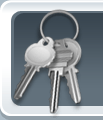* Bruised sole (or "Stone Bruise"): This is caused when a horse steps on sharp rock and bruises the bottom of the foot. If your horse is shod, and the shoes aren't fitted correctly, this can increase the chances of injury to the sensitive sole of your horse's foot. The treatment, in most cases, is rest: turn him out in the pasture and give him a few days off. Most horses do not need to be kept stalled unless the bruise is very deep and the horse is totally lame. If this is the case, it's best to get the vet to test the hoof
asics gel 1150, evaluate the severity of the bruise, and possibly give your horse some pain and anti-inflammatory medications.
4. What are some common hoof problems and how do I spot them?
There's a common perception that white feet are weaker than dark feet. There is no scientific evidence to support this, but many people swear it's true, and so will shoe a horse for no other reason than that it has "weak" white feet. The bottom line: Unless a vet or farrier tells you to shoe your horse, don't.
2. To supplement or not to supplement?
* Those with a foot deformity (like club foot or weak hoof walls), where a vet and farrier have recommended corrective shoeing as a remedy;
* Those recovering from a bad founder (aka laminitis);
* Those that are star athletes (like jumpers or racing horses);
* Those that are regularly ridden on very hard surfaces (like a carriage horse or police horse).
Some of the most common hoof problems are:
5. How often do I need to pick out my horse's feet?
* White-line (or "seedy toe") disease: This one can be a real pain to get rid of once your horse has it. It's characterized by a "white line" that becomes visible around the edge of the underside of the foot, and can cause weakening of the hoof wall if left untreated. Horses that chronically founder are more susceptible to this ailment. Your farrier will have to help you with this one by digging out the bad part of the wall and putting on special shoes that support the hoof while allowing the wall to re-grow. Keeping your horse's feet as clean and dry as possible, and keeping his feet regularly trimmed so that the toe cannot grow too long are the best ways to prevent this condition.
Domestic horses, while they have weaker feet than those in the wild, have the advantage of human care. When done correctly and taken seriously, most hoof problems can be avoided with preventive maintenance. A horse with bad feet is a burden to everyone, including himself. Therefore, proper hoof care might be the most critical thing you do to take care of your horse's physical needs.
When you think about hoof care, there are some basic things to consider:
3. How often does the farrier need to visit?
The final word in hoof care is "prevention." The recipe for healthy feet is: Pick them out daily, have the farrier out regularly, and feed a balanced diet.
* Abscesses: When your horse punctures the bottom of his foot, and the top seals over before the wound heals, an abscess can form. Depending on the severity of the wound, you might be able to treat it yourself. Scrape off the top of the abscess and drain the infected fluid. Soak the foot twice a day for a week in Epsom salts and warm water. If it doesn't look significantly better by the next day, or three soakings (even though you should continue the treatment for a week to be sure you kill all the bacteria causing the infection), call the vet or farrier and get help.
1. To shoe or not to shoe?
If a supplement is recommended, by all means, try it. Perhaps it will improve your horse's digestion or help him grow more foot faster, but it won't change feet that were bad from birth.
Most regular riding horses don't need shoes. Barefoot is best. The types of horses that commonly need shoes are:
The math types declare there is dependency in the baccarat game. Dependency means as the first half of the baccarat shoe is played it necessary determines the composition of the second half of the baccarat shoe. Therefore, we should be able to develop some edge over the house in the second part of the shoe since we already know which cards have been played in the first half of the shoe (of course we would have to keep track somehow to know this). Card counting pioneered and used successfully in blackjack was attemped in baccarat. The result was slightly positive but very disappointing as the player advantage was very very slight. My advise on baccarat card counting; don't waste your time, it won't work.
For example, all horses need to eat grass and other roughage (hay and whole grains). All horses need fresh, clean water
asics kinsei shoes Christmas Ideas For the Golf En, and lots of it. All horses need certain minerals in their diet, and if the soil where your horse is pastured doesn't provide them, you need to give him a mineral block or add loose minerals to his feed. If your horse is not thriving on a diet like this, consult your veterinarian.
There is no evidence (other than anecdotal) that giving your horse oral vitamins or supplements do anything to change the feet God gave him, but if you have money to throw away on that stuff, go right ahead. The best way to improve your horse's feet through diet is simply to make sure he is eating all the things a horse is supposed to, and is getting all the vitamins and minerals a horse should get from that diet.
We've all heard the expression, "No foot, no horse." In the wild, horses don't have the benefit of vet or farrier. A horse that goes lame in a wild herd is likely doomed to die, since he will no longer be able to keep up with the herd or outrun predators.
Your horse's feet need to be trimmed or shod anywhere from every four weeks to eight weeks. This will depend largely on how fast your horse's feet grow. If you have more than one horse, and want them all on the same schedule, every six weeks will usually work for just about everyone. However, if your horse has a foot problem and needs special care, follow the advice of your vet or farrier on the frequency of trims.
Other methods of extracting the "dependency" from the baccarat game have been explored.
Dr. S.H. Johnson performed extensive computer research using large volumes of live baccarat data. He studied thousands of reoccuring patterns in relation to the dominence of the shoe (banker or player) at the time the pattern occurred. He was able to extract an advantage only slightly less than created by card counting in blackjack. Dr. Johnson reports the practical limitation of this baccarat strategy is the very infrequent occurence of betting opportunies. This strained the ############'s patience when he set out two thirds of a shoe before placing his advantaged play. The play required very large bets and a large bankroll to generate a modest profit. The good doctor concluded the strategy was more of a moral victory that a practical solution to taking the advantage in the baccarat game.
The answer is simple: every day! If you are caring for your horse's feet every day, picking them out and removing rocks and other debris, you will be more likely to spot and prevent problems before they have a chance to start.
* Thrush: Your horse's frog will be mushy, will smell bad, and look eaten away. In bad cases, when you pick your horse's foot, it will bleed. An old fashioned remedy is to kill the fungus by applying bleach water to the affected hoof, but this can be very hard on your horse's feet and really dry them out. These days, there are lots of thrush remedies available at the local feed store. Coppertox and Absorbine both make hoof rinses that do a good job of getting rid of the fungus that causes thrush.


